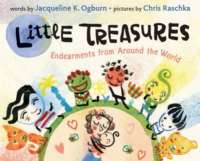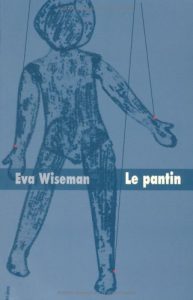This unique and powerful wordless book uses striking photos to show the impact of humans on the environment. Each provocative image speaks volumes. On every spread we are shown a treasure that nature has given us beside a picture of how we’ve abused that treasure. We see a beautiful forest glade beside a devastated patch of burned-out wood, a gorgeous green parrot beside a dull-feathered caged bird, a sparkling waterfall beside a garbage-clogged river. It would take thousands of words to express the important environmental message presented by Cristina Urrutia.
Author: Book Importer
If You Lived Here: Houses of the World

Step into unique homes from around the world and discover the many fascinating ways in which people live and have lived. If you lived in the mountains of southern Spain, your bedroom might be carved out of a mountain. If you lived in a village in South Africa, the outside of your house might tell the story of your family. And if you lived in a floating green house in the Netherlands, you could rotate your house to watch both the sunrise and sunset. With intricate bas-relief collages, Giles Laroche uncovers the reason why each home was constructed the way in which it was, then lets us imagine what it would be like to live in homes so different from our own. Showing the tremendous variety of dwellings worldwide—log cabins, houses on stilts, cave dwellings, boathouses, and yurts—this book addresses why each house is build the way that it is. Reasons—such as blending into the landscape, confusing invaders, being able to travel with one’s home, using whatever materials are at hand—are as varied as the homes themselves. List of Houses included: Dogtrot log house, based on dogtrots built in the southern U.S. Chalet, based on chalets built in the Austrian Alps. Pueblo, Taos, New Mexico Connected barn, based on connected barns common in northern New England. Cave dwelling, Guadix, Andalucia, Spain Palafitos (house on stilts), Chiloe Island, Chile Palazzo Dario, Venice, Italy Chateau La Brede, Bordeaux, FranceTulou, Hangkeng village, Yongding, China Half-timbered houses, Miltenberg am Main, Germany Greek island village houses, Astipalaia Island, Greece Decorated houses of Ndebele, Pretoria, Transvaal, South Africa Yurt, based on yurts in Mongolia and other parts of central Asia. Airstream trailer, USA Floating house, Middleburg, the Netherlands Tree house, USA.
Beauty and the Beast
Through her great capacity to love, a kind and beautiful maid releases a handsome prince from the spell which has made him an ugly beast.
Earth-Friendly Buildings, Bridges and More
This dynamic title takes the form of Corry’s scrapbook. It’s a dazzling collection of postcards, brochures and other memorabilia documenting Corry’s research into green design. Kid-friendly language explains the engineering behind some of the planet’s most cutting edge towers, bridges, tunnels, domes, dams, dikes, locks and levees. These structures include the Vizcaya Bridge in Spain, where gondolas transport cars over the Nervion River, and the Channel tunnel, where trains speed between England and France in just 35 minutes.
Going Ape!
Little Dog Lost
A dog is rescued after days afloat on a sheet of ice in the Baltic Sea.
Russia: The People
After years of unemployment and crushing inflation, Russians are looking to the future with hope of a new prosperity. This colorful revised edition takes a look at the new middle class and how the culture has been changing since the country
Russia: The Land
This new revised edition of Russia: the Land takes a fresh look at this country’s transformation over the past century. Russia’s economic growth has had an impact on the environment and on the ways of life of its peoples.
The Elijah Door
A little help from the rabbi on Passover ends a feud between the Lippas and the Galinskys.
Le Pantin
 Julie a une amie, Esther. Elles vivent dans un village de Hongrie,Tizla-Eszlar, elles sont pauvres, et la vie est dure. Le père de Julie la terrorise et la bat. Mais il y a aussi de la douceur, les paroles tendres et sages et aimantes de sa mère, du soleil, des spectacles forains. Et les yeux bruns de Moric Scharf, un jeune garçon juif timide que Julie aime bien. Un jour de printemps Esther disparaît. Et la rumeur gronde, une rumeur venue du fond des âges, qui veut que les juifs soient responsables de tous les maux, le pogrom menace, les cris montent. On jette en prison les hommes juifs. Les villageois se rassemblent, et un simulacre de procès se prépare. Tout a l’air décidé d’avance. Rien ne se passera comme prévu. Eva Wiseman s’est souvenue de ce fait divers réel que sa mère évoquait quand elle était petite, elle a rassemblé des tonnes de documentation, elle a écrit un roman inoubliable, qui serre le coeur et tient en haleine, parce qu’il démonte les mécanismes de la peur, de la lâcheté, de la violence collective. On ne peut plus oublier Julie Vamosi, toute petite devant les juges, devant la haine raciste, mais fidèle à son amie, et forte de son amour pour les êtres.
Julie a une amie, Esther. Elles vivent dans un village de Hongrie,Tizla-Eszlar, elles sont pauvres, et la vie est dure. Le père de Julie la terrorise et la bat. Mais il y a aussi de la douceur, les paroles tendres et sages et aimantes de sa mère, du soleil, des spectacles forains. Et les yeux bruns de Moric Scharf, un jeune garçon juif timide que Julie aime bien. Un jour de printemps Esther disparaît. Et la rumeur gronde, une rumeur venue du fond des âges, qui veut que les juifs soient responsables de tous les maux, le pogrom menace, les cris montent. On jette en prison les hommes juifs. Les villageois se rassemblent, et un simulacre de procès se prépare. Tout a l’air décidé d’avance. Rien ne se passera comme prévu. Eva Wiseman s’est souvenue de ce fait divers réel que sa mère évoquait quand elle était petite, elle a rassemblé des tonnes de documentation, elle a écrit un roman inoubliable, qui serre le coeur et tient en haleine, parce qu’il démonte les mécanismes de la peur, de la lâcheté, de la violence collective. On ne peut plus oublier Julie Vamosi, toute petite devant les juges, devant la haine raciste, mais fidèle à son amie, et forte de son amour pour les êtres.
